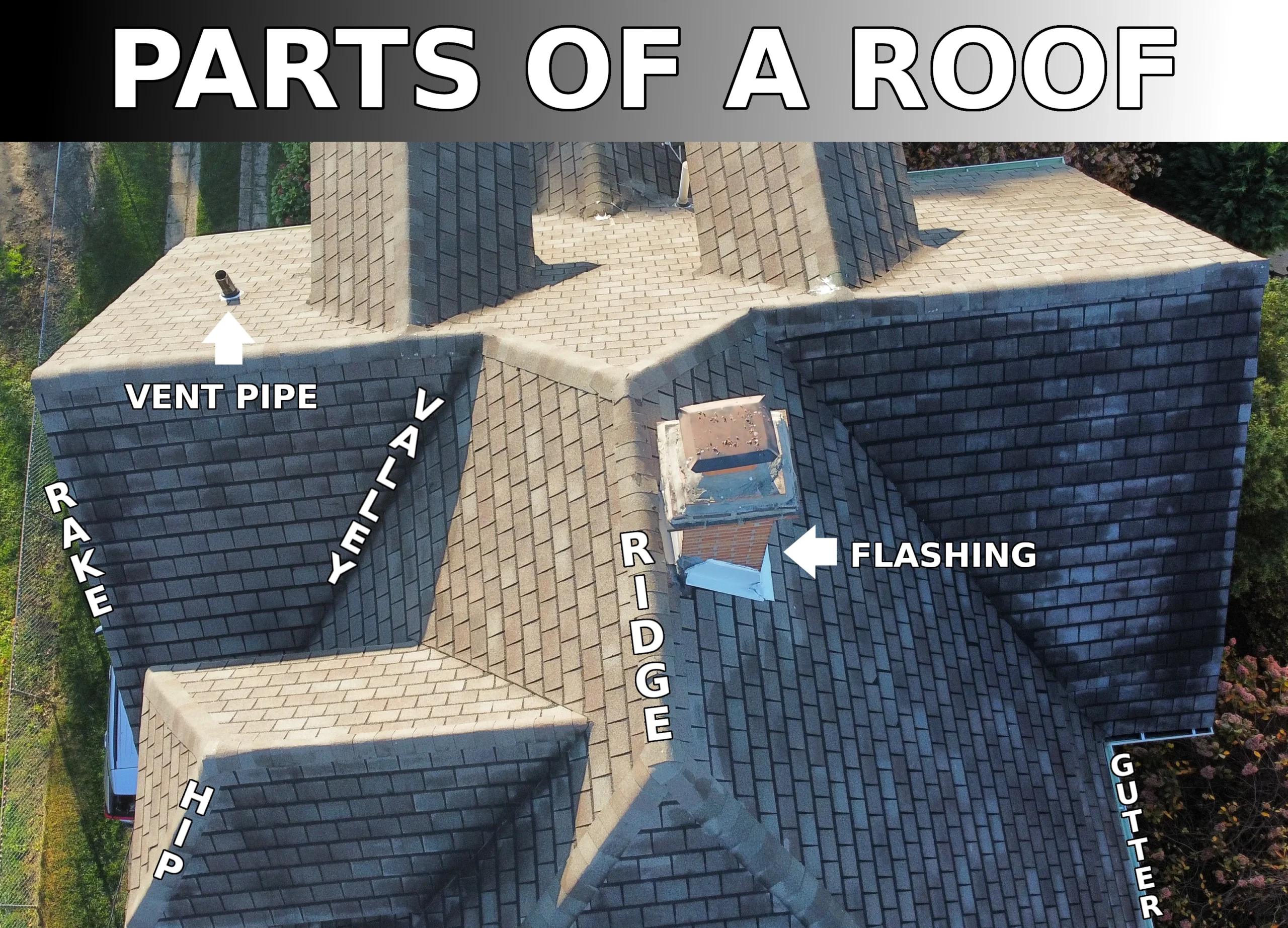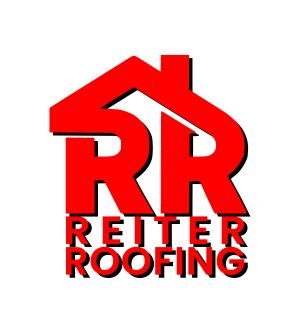
A Basic Guide to the parts of a roof
The roof might just be the most vital component of a building. It provides shelter and protection from the elements as well as gives a home its unique look. It is often overlooked and underappreciated, in our experience, nobody ever looks up.
Understanding the different parts of a roof can help homeowners, contractors, and realtors appreciate the complexity of roof design and lead to better communication. Let’s explore the different parts of a roof, from the eave to the ridge, and talk about their function and significance.
Eave
An eave is the part of the roof that overhangs the walls of a building. It is located at the lowest edge of the roof, projecting beyond the exterior walls. Often people refer to an eave as an overhang. Eaves serve multiple purposes, including preventing water from dripping directly down the walls, protecting the siding and foundation, and providing shade to the building’s windows.
Gable
A gable refers to the triangular portion of a wall between the edges of intersecting roof pitches. Gables are commonly found at the ends of a building and provide a distinct aesthetic appeal. They play a crucial role in roof design, as they allow for the proper shedding of water and ensure structural integrity.
Gutter
A gutter is responsible for the drainage of the roof and is installed along the eaves of a roof. It’s main function is to collect and redirect rainwater away from the building’s foundation by way of vertical piping called downspouts. It is typically made of metal or plastic and is essential for preventing water damage, erosion, and basement flooding. Gutters are complemented by downspouts, which carry the water from the gutters to a safe drainage location.
Hip
A hip is a roof’s external angle that occurs when two roof slopes meet at a corner. Hips are commonly found in buildings with four or more roof planes. They provide additional structural stability to the roof and contribute to its overall aesthetic appeal. Hip roofs are known for their resistance to high winds and are often preferred in areas prone to hurricanes or storms.
Hip and Ridge
The hip and ridge are two related components that are closely associated with a hip roof. The ridge is the horizontal line formed by the intersection of two roof slopes, while the hip is the outside angle created by two adjacent roof slopes on the ends of a building. The hip and ridge play a vital role in distributing weight and providing a finished look to the roof.
Pitch
The pitch of a roof refers to its steepness or slope. It is determined by the ratio of vertical rise to horizontal run. You’ll often hear roof pitch talked about using terms like 6/12 or 4/12. That’s ratio means that for every foot the roof goes in a horizontal direction (the bottom number), it also changes in the vertical direction. Roof pitch is crucial for water drainage and influences the overall aesthetic of the building. Steeper pitches are commonly found in regions with heavy rainfall or snowfall, as they promote better runoff.
Rafter
Rafters are sloped beams that support the roof’s structure. They run from the ridge or hip down to the eave, providing the main framework for the roof. Rafters are typically made of wood and are spaced evenly to distribute the roof load. They are an important part in supporting the roof’s weight and transferring it to the building’s walls, and then to the foundation.
Rake Edge
A rake edge is the sloped edge of a roof that runs from the eave to the ridge or hip. It is located on the gable ends of a roof (‘A’ frame shaped walls under the eave) and often extends beyond the building’s walls. Rake edges serve both functional and aesthetic purposes. They help shed water efficiently away from the building’s walls and they give the edges of a roof a clean, finished look.
Truss
A truss is a typically a wood framework composed of interconnected beams and triangles that provides support and stability to the roof. Trusses are usually prefabricated and made of wood but sometimes the are metal. They are designed to distribute the roof’s weight evenly and are engineered to span longer distances than individual rafters that are used in traditional framing. Trusses offer benefits, including cost-effectiveness, ease of installation, and increased structural integrity. They are typically found in new construction homes made in the last 20 years.
Valley
A valley is the part of the roof formed when two roof slopes come together. Valleys are typically V-shaped and help to funnel water down to the gutters or eaves. They are prone to collecting debris, so proper maintenance is essential to prevent clogging and water damage. Valleys can be reinforced with flashing to ensure watertightness. Valleys are typically finished in either an open fasion, with sheet metal visible in the valley, or a closed valley where the shingles completely cover the valley.
Understanding the different parts of a roof is important when talking to a contractor. Each part serves a specific purpose in creating the roof’s functionality, protection, and curb appeal. From the eave to the ridge, every element plays a role in maintaining the structural integrity and longevity of a roof. It is important to be able to communicate effectively when talking about the roof during a project.
The entire roof works as a complete system, directing water from its surface to a series of gutters and downspouts and away from the building.
The eave provides protection to the walls and foundation, while the gable adds architectural charm. Gutters and downspouts efficiently manage rainwater runoff, preventing damage and erosion. Hips and ridges enhance structural stability and give the roof a definitive appearance. The pitch determines the roof’s slope, affecting water drainage and overall design.
Rafters and trusses form the framework of the roof, distributing the roof’s weight and providing support. Rake edges contribute to both functionality and aesthetics, aiding in water shedding and creating a polished look. Lastly, valleys ensure proper water flow and require regular maintenance to avoid issues.
By familiarizing yourself with these various parts, you can better appreciate the complexity of roof design and maintenance. Whether you’re a homeowner looking to improve your understanding or a contractor trying to deliver high-quality roofing services, knowing the ins and outs of a roof’s anatomy is worth your time.
Remember, proper installation, regular inspections, and timely repairs are needed to maintain a sturdy roof with a long life. Always consult with a professional roofer like Reiter Roofing for any roofing concerns or projects to ensure the best results and long-term satisfaction.
The different parts of a roof work together to protect a building from the elements and provide a safe and dry living space. Appreciating the roles of the eave, gable, valley, pitch, rafter, truss, hips, gutter, rake edge, hip, and ridge allows us to understand the intricacies of roof design and maintenance. So, the next time you look up at a roof, take a moment to acknowledge the level craftsmanship and engineering that goes into its construction.

Call Today for a Free Estimate
Call us today at 215-335-9999 for a free estimate to repair or replace your roof, siding, or gutters, or click the button to go to our contact form.